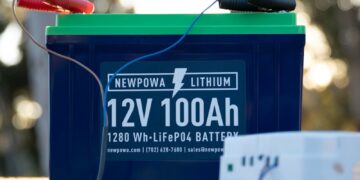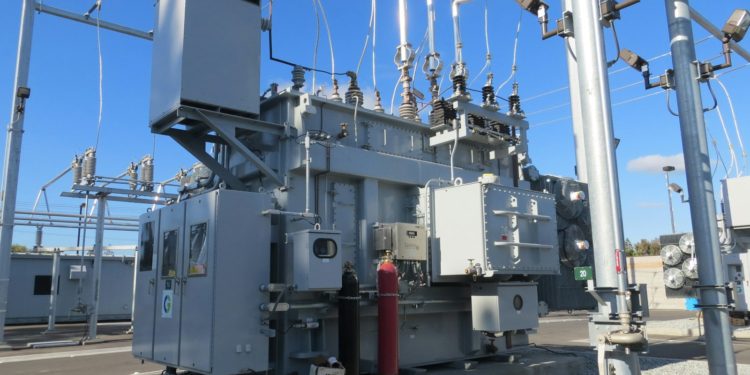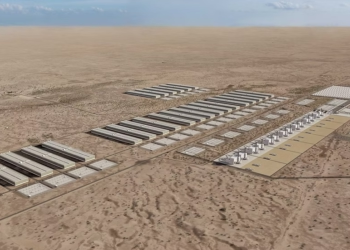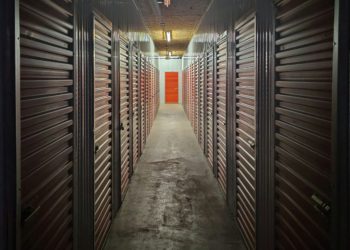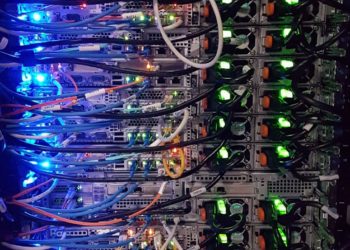A Game-Changing Approach to Powering the AI Era with Small Modular Reactors and Natural Gas Generators
Small modular reactors (SMRs) combined with reciprocating natural gas generators (RNGGs) can deliver 225 MW of clean, reliable power to data centers in just 24 months, scaling to 1 GW over time. Image: Alamy
The AI revolution is here, and data centers are its beating heart. But as demand for computing power surges, so does the need for clean, reliable, and scalable energy. Traditional power solutions—aging grids, diesel backups, and even renewables—are struggling to keep up. Enter a bold new approach: pairing small modular reactors (SMRs) with reciprocating natural gas generators (RNGGs). This hybrid strategy delivers power in as little as 24 months, offering data center developers a fast, sustainable, and cost-effective path to fuel the future.
Companies like Oklo, NuScale Power, Cummins, and Wärtsilä are leading the charge, deploying innovative technologies to power the next generation of AI-driven data centers. This solution isn’t just about meeting today’s needs—it’s about building a resilient energy infrastructure for tomorrow. Here’s why this approach is a game-changer and how it’s poised to reshape the data center industry.
The Data Center Power Challenge
Data centers are the backbone of the digital economy, supporting everything from cloud computing to generative AI. A single hyperscale facility can consume as much electricity as a medium-sized city, and global data center demand is projected to grow at a 10.5% CAGR through 2030. Yet, powering these facilities is becoming increasingly difficult.
Grid Constraints
The electrical grid, once a reliable source of power, is buckling under the weight of surging demand. In regions like Northern Virginia and Silicon Valley, utilities are struggling to allocate sufficient capacity for new data centers. Developers face delays, relocations, or outright rejections, stalling projects critical to the AI boom.
Diesel’s Declining Viability
Diesel generators, long used for backup power, are falling out of favor. Stricter regulations, such as the EPA’s Tier 4 emissions standards, limit their use on large campuses. Diesel is also costly and environmentally unsustainable, clashing with the net-zero goals of tech giants like Microsoft, Google, and Meta.
Renewables’ Limitations
Wind and solar are cornerstones of the clean energy transition, but they’re not a perfect fit for data centers. Their intermittent output requires expensive battery storage or backup systems to ensure 24/7 reliability. Moreover, renewable projects demand vast land—hundreds of acres—triggering environmental concerns and community pushback. Connecting remote wind and solar farms to data centers often requires new transmission lines, which can take a decade to build.
The SMR + RNGG Solution: Fast, Clean, Scalable
The combination of small modular reactors (SMRs) and reciprocating natural gas generators (RNGGs) offers a revolutionary solution. By leveraging the speed of RNGGs and the long-term reliability of SMRs, developers can deploy power quickly and scale sustainably. Here’s how it works.
Why Small Modular Reactors (SMRs)?
SMRs are compact nuclear reactors that generate 10–300 MW of electricity. Unlike traditional nuclear plants, which require decades and billions to build, SMRs are faster, cheaper, and safer. Their advantages include:
- Cost Efficiency: SMRs have lower upfront costs, making them accessible for data center projects. For instance, Oklo’s Aurora reactor competes with natural gas plants in cost.
- Rapid Deployment: SMRs can be operational in 3–4 years, compared to 10–15 years for large reactors. NuScale Power’s modular design is already NRC-approved, accelerating timelines.
- Unmatched Safety: Passive cooling systems ensure SMRs can shut down safely without external power or human intervention, minimizing risks.
- Compact Design: A single SMR occupies just 3–4 acres, ideal for space-constrained data center campuses.
- Scalability: Multiple SMRs can be deployed incrementally, aligning energy growth with data center expansion.
- Reliability: Clusters of SMRs provide redundancy, ensuring 24/7 power for mission-critical operations.
Spotlight: Oklo’s Aurora
Oklo’s 15 MW Aurora reactor is designed for small-scale applications like data centers. With partnerships already in place with tech firms, Oklo aims to deploy its first reactors by 2027, offering up to 20 years of clean power without refueling.
Why Reciprocating Natural Gas Generators (RNGGs)?
RNGGs are high-efficiency gas engines producing 3–20 MW per unit. They bridge the gap while SMRs are built, offering immediate power with lower emissions than diesel. Leaders like Cummins and Wärtsilä are driving adoption with systems that deliver:
- Speed to Market: RNGGs can be installed in 18–24 months, enabling rapid data center launches.
- Cleaner Operation: Emitting over 98% fewer pollutants than Tier II diesel generators, RNGGs align with environmental regulations.
- Fast Response: With start times as low as eight seconds, RNGGs rival diesel in reliability for backup and load-following.
- Fuel Efficiency: RNGGs outperform traditional gas turbines, maintaining efficiency in diverse conditions.
- Supply Chain Advantage: Unlike large turbines facing delays into 2029, RNGGs are readily available, ensuring project timelines stay on track.
- Modularity: Developers can add units to scale power output, supporting phased growth.
Spotlight: Cummins HSK78G
Cummins’ HSK78G generators deliver up to 2 MW per unit with top-tier efficiency and low emissions. Deployed globally, they’re a go-to for data centers seeking reliable, grid-independent power.
The Phased Power Plan
This hybrid approach enables a 1 GW data center campus on just 60 acres, with power delivered in phases:
- Phase 1 (24 Months): Deploy 225 MW of RNGG capacity to launch operations and generate revenue quickly.
- Phase 2 (48 Months): Add two SMRs (50–100 MW each) for clean, baseload power, reducing gas reliance.
- Phase 3 (60+ Months): Scale SMRs to 1 GW, with RNGGs shifting to backup and load-following roles. Excess capacity can support local grids if connected.
This strategy minimizes risk, optimizes capital, and ensures energy infrastructure keeps pace with digital growth.
Why Other Solutions Don’t Cut It
Alternative power options fall short for data centers racing to meet AI-driven demand.
Central Plants and Transmission
New power plants and transmission lines are mired in red tape. Permitting and lawsuits can delay projects by a decade, far too slow for urgent data center needs.
Wind and Solar
While eco-friendly, wind and solar can’t deliver 24/7 power without costly storage. Their massive land requirements—hundreds of acres—spark environmental and community conflicts. Transmission delays further complicate deployment.
Large Nuclear
Large nuclear plants offer reliable, emissions-free power but require 10–15 years and billions to build. Few developers can afford the time or cost.
Leaders Driving the Future
Innovative companies are making the SMR + RNGG vision a reality:
- Oklo: Pioneering microreactors like the Aurora, Oklo is partnering with tech giants to power data centers by 2027.
- NuScale Power: With NRC-approved SMRs, NuScale is scaling 77 MW reactors for data center clusters.
- Cummins: Its HSK78G generators provide rapid, low-emission power, integrating seamlessly with SMRs.
- Wärtsilä: Known for flexible RNGGs, Wärtsilä supports data centers with fast-deploy, modular systems.
The Path Forward: A Call to Action
The race for AI supremacy is on, and power is the bottleneck. The SMR + RNGG solution offers data center developers a competitive edge: speed, reliability, and sustainability. By embracing this approach, companies can launch projects faster, meet net-zero goals, and secure their place in the AI-driven future.
Why Share This?
This is more than a technical innovation—it’s a paradigm shift for the data center industry. If you’re in tech, energy, or sustainability, this solution deserves your attention. Share this article on LinkedIn to spark a conversation about the future of power. Let’s inspire the industry to think bigger and act faster.
Join the Discussion
What’s your take on powering the AI era? Have you explored SMRs or RNGGs for your projects? Drop your thoughts in the comments on LinkedIn and let’s shape the future…






